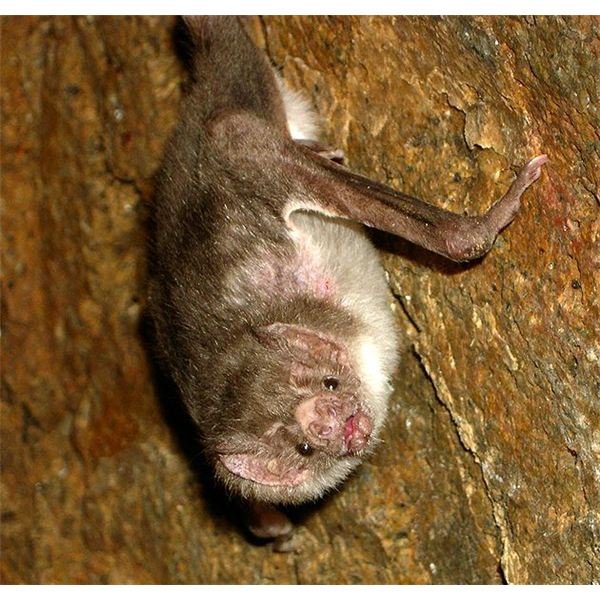Species Spotlight: The Common Vampire Bat Part 1
Some legends hold that a virus transmitted through bats, infects a few rare souls that happen to bit by a vampire bat. The result is an immortal who walks the night, surviving off of the blood of others. Other legends say that vampirism is transmitted via a bat who carries a curse. Unfortunately, to the disappointment of many, vampire bats do not hold a magical power to transform a mere mortal into suave and cunning creature of the night. Vampire bats are; however, very intriguing creatures who have learned to master the darkness in which they inhabit. From their unique dietary habits to their social behavior, to spite their name, there is nothing common about the common vampire bat.
Physical Description of the Common Vampire Bat:
Unlike the more familiar fruit bat, the common vampire bats do not have the leaf type of structure on its nose and instead has a short, cone like muzzle. Vampire bats also have a unique adaptation to help it in locating the blood of its victims with tiny thermoreceptors in its nose. They also have the iconic pointy, razor sharp teeth.
Habitat and Range of The Common Vampire Bat:
A longtime subject of legend and lore and a symbol of the night conjuring images of fear and mystery, the common vampire bats are so named because they are hematophagous, which means they feed entirely on a diet composed of blood. The common vampire bat is one of three species of vampire bats (the other two being the white-legged vampire bat and the hairy legged vampire bat both very similar to the common vampire bat) and inhabits most of its native lands in North and South America including Mexico, Argentina, Brazil, and Chile.
Being rather social creatures, vampire bats typically live in colonies in extremely dark locations such as caves, old wells, or even trees. You will often find bat colonies that are comprised of more than one species of bats. Although colonies can range from a couple of individuals to thousands of bats, a typical colony often consists of a breeding male along with several females, around 20 or so, and their offspring.
This post is part of the series: Species Spotlight: The Common Vampire Bat
Get a closer look at the mysterious vampire bat.
